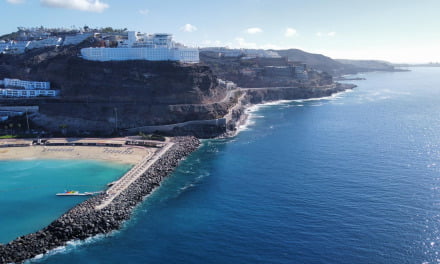Canary Islands – The Canary Islands have launched their 2023-2024 winter tourism season, setting new records in the hotel industry and reinforcing their status as a premier European and global destination, and Europe’s only sub-tropical winter sunshine destination. The main winter period, stretching from October 1 to March 31, typically marks the most lucrative phase of the year for the archipelago’s tourism sector, known for its appealing climate and beautiful landscapes.
The data, recently released by Spain’s National Institute of Statistics (INE), paints a picture of a thriving industry. An increase in open hotels and accommodations has signaled not only a recovery from the impacts of the pandemic, but also a significant growth trajectory. A surge in employment within the sector is particularly noteworthy, reflecting the islands’ commitment to bolstering their economy and providing job opportunities to local communities.
However, amidst these positive developments, there remains a minor concern: the average length of stay in hotels has slightly decreased. While the average duration of 6.36 days per tourist is not alarmingly low, it is the shortest for an October month since 2007, excluding the pandemic years. This dip could indicate changing travel patterns or preferences, an aspect that industry experts and stakeholders are likely to examine closely.
Despite this, the overall outlook for Canary Islands’ tourism, and for Gran Canaria, is overwhelmingly positive. The record-breaking figures are testament to the islands’ enduring appeal and the apparent effectiveness of their tourism strategies. The archipelago’s unique position as a leading winter destination in Europe, competing with other holiday hot-spots like the Caribbean, Turkey-Egypt, and parts of Asia, continues to attract visitors from around the world.
The success of the Canary Islands in the tourism sector is not just a matter of numbers; it would be fair to say it represents the culmination of strategic planning, investment in infrastructure over recent years, and a concerted effort to enhance the visitor experience. The islands have consistently focused on offering a diverse range of activities and attractions, catering to different tastes and preferences, which has played a crucial role in their sustained popularity.
As the high season progresses, the Canary Islands are poised to capitalize on their current momentum. A blend of natural beauty, cultural richness, and top-notch hospitality continues to draw tourists, making the archipelago a beacon of success on the global tourism landscape. This winter, therefore, should not just be a period of economic gain but a celebration of the Islands’ enduring charm and resilience in the face of past challenges.













